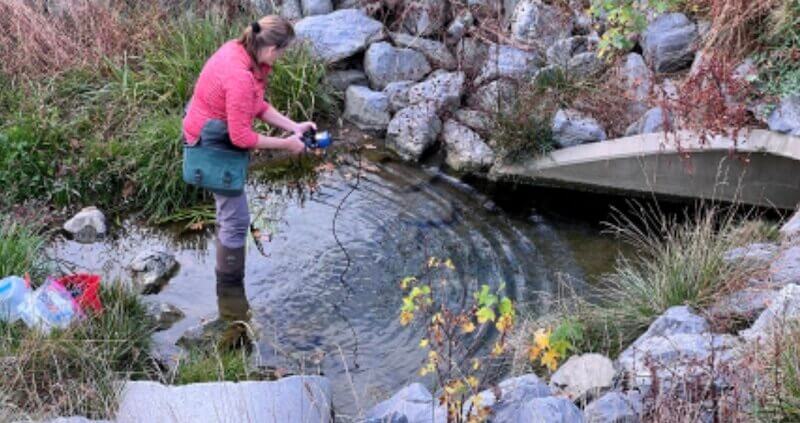Conservation Groups Meet At Lake Frederick
Partners of the Blue Ridge Conservation Alliance gathered August 17 at Lake Frederick’s Shenandoah Lodge to learn about the lake’s ecology and volunteer efforts to improve and sustain it. The event was hosted by the Friends of Lake Frederick. FOLF, a 501 (c) (3) organization, augments the efforts of Virginia state agencies responsible for managing Lake Frederick and its natural resources. Partners in the Alliance, work to protect the natural, scenic, and historic values of the Blue Ridge in five counties from Front Royal, Va., to Harpers Ferry, W.Va.
Lake Frederick, the 117-acre waterbody, is managed primarily for fishing by Virginia Department of Wildlife Resources (DWR). The lake is surrounded by the unincorporated community of Lake Frederick, which one day will number over 2,000 residences, two pools and clubhouses, and other amenities. A narrow sliver of Clarke County is adjacent to the community, and the pastoral south end of the county likes directly across from the entrance.
DWR acquired the lake and a fifty foot buffer around the entire shoreline in 1981; the buffer was later enlarged to 100 feet. The lake has a maximum depth of 50 feet and an average depth of 20 feet. Much of the shoreline and the upper ends of the two embankments contain standing submerged timber. Typically, the standing timber is located along the shoreline out to around twenty-five feet from
the water’s edge.
FOLF volunteers have established a walking trail around the lake — the only such trail around a DWR lake, according to volunteer John Toliver. Toliver and fellow volunteer Marv Davis treated the gathering’s guests to a presentation about the watershed, history of FOLF, their water quality monitoring sites, the nature trail, and their collaboration with VDWR. Guests included Karen Anderson, laboratory and program director for Friends of the Shenandoah River, which has monitored Crooked Run, the stream that feeds the lake and empties into the river downstream.
After the presentation, Toliver guided guests on an interpretive walk to a proposed site of a pollinator meadow on the DWR buffer zone.
FOLF’s long-term vision is for Lake Frederick to be renowned for its natural beauty and recreational value. Their goals are to: construct and maintain the trail and plant native trees in the lake’s buffer zone, sponsor cleanup and other volunteer activities, and educate people about the lake.










